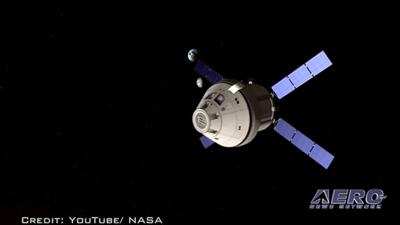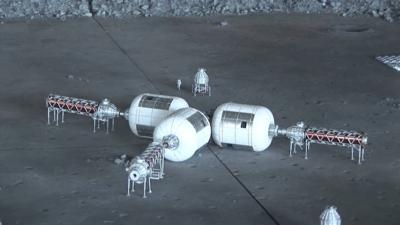Sat, May 06, 2017
Delivers An Alternative To Current Environmental Control And Life Support Systems As Space Missions Evolve
A teaming agreement has been announced between Honeywell and Paragon Space Development Corporation that could potentially change the way astronauts experience life in space. The two companies will design, build, test and apply environmental control and life support systems for future human NASA and commercial programs.

Longer duration, human-exploration missions are planned for the future, but there is no easy way to replenish resources such as oxygen and water in space. NASA's future human-exploration missions will require an integrated and highly efficient system for life support and thermal control. Paragon's focus on evolving water and thermal technologies complements Honeywell's new developments in air revitalization technologies, both of which are essential parts of the spacecraft needed for NASA's deep space goals.
"A renewed interest in developing a Deep Space Habitat needed for reaching the Moon and Mars, continued experimentation aboard the International Space Station, and a desire to push the limits of unmanned flights make this a remarkable time in space exploration. Unmanned achievements are now giving way to long-distance and long-duration human missions. The technology developed by Honeywell and Paragon will give humans the opportunity to explore space for longer periods than before," said Marty Sheber, vice president, Space, Honeywell Aerospace. "Honeywell has a long legacy of providing mission-critical environmental control and life support systems (ECLSS), including being the provider of critical parts of the system currently used on the International Space Station. That heritage, coupled with Paragon's focus on innovative and emerging ECLSS technologies, provides a complementary team to develop technology capable of supporting humans on their longer explorations into space."

"This agreement allows the Honeywell and Paragon team to provide fully integrated solutions to NASA, combining our strengths of experience and innovation in technology with an agile and customer-focused responsiveness," said Grant Anderson, president and CEO, Paragon Space Development Corporation. "Potential prime contractors and NASA will have access to a system-focused integration team with a catalog of proven and emerging technology to bring long-duration exploration of the Moon and Mars to practical implementation."
(Source: Honeywell news release. Images from file)
More News
Terminal Radar Service Area Airspace surrounding designated airports wherein ATC provides radar vectoring, sequencing, and separation on a full-time basis for all IFR and participa>[...]
Very High Frequency (VHF) The frequency band between 30 and 300 MHz. Portions of this band, 108 to 118 MHz, are used for certain NAVAIDs; 118 to 136 MHz are used for civil air/grou>[...]
“From approximately November 2021 through January 2022, Britton-Harr, acting on behalf of AeroVanti, entered into lease-purchase agreements for five Piaggio-manufactured airc>[...]
Also: Virtual FLRAA Prototype, IFR-Capable Autonomous A/C, NS-32 Crew, Golden Dome Missile Defense Bombardier announced that the first production Global 8000 successfully completed>[...]
Aero Linx: The 1-26 Association (Schweizer) The Association’s goal is to foster the helpfulness, the camaraderie, and the opportunity for head-to-head competition that is fou>[...]
 ANN's Daily Aero-Term (05.29.25): Terminal Radar Service Area
ANN's Daily Aero-Term (05.29.25): Terminal Radar Service Area ANN's Daily Aero-Term (05.30.25): Very High Frequency (VHF)
ANN's Daily Aero-Term (05.30.25): Very High Frequency (VHF) Aero-News: Quote of the Day (05.30.25)
Aero-News: Quote of the Day (05.30.25) Airborne 05.23.25: Global 8000, Qatar B747 Accepted, Aviation Merit Badge
Airborne 05.23.25: Global 8000, Qatar B747 Accepted, Aviation Merit Badge ANN's Daily Aero-Linx (05.30.25)
ANN's Daily Aero-Linx (05.30.25)




